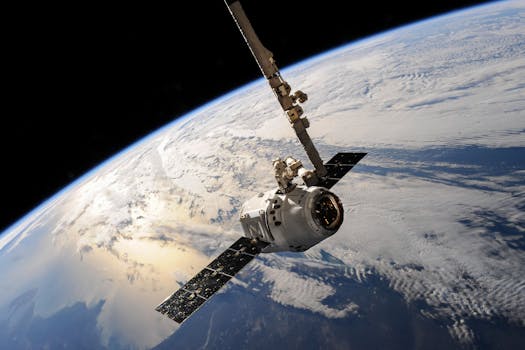The Future of Satellites: Revolutionizing Global Connectivity
The future of satellites is poised to revolutionize global connectivity, enabling faster and more reliable communication, navigation, and remote sensing. With advancements in space technology, satellites are becoming smaller, cheaper, and more powerful, opening up new opportunities for commercial, scientific, and military applications.

The Future of Satellites: Revolutionizing Global Connectivity
The future of satellites is poised to revolutionize global connectivity, enabling faster and more reliable communication, navigation, and remote sensing. With advancements in space technology, satellites are becoming smaller, cheaper, and more powerful, opening up new opportunities for commercial, scientific, and military applications. The future of satellites holds great promise, with the potential to transform the way we live, work, and interact with one another.
One of the most significant trends in the future of satellites is the development of small satellites, also known as CubeSats. These tiny satellites are approximately the size of a shoebox and weigh only a few kilograms, making them much cheaper and easier to launch than traditional satellites. Small satellites are ideal for a wide range of applications, including Earth observation, communication, and navigation. They can be used to monitor climate change, track natural disasters, and provide internet connectivity to remote and underserved communities.
Advancements in Space Technology
Advances in space technology are driving the future of satellites, enabling the development of more sophisticated and capable satellites. One of the most significant advancements is the use of reusable rockets, which can significantly reduce the cost of launching satellites into space. Reusable rockets, such as those developed by SpaceX and Blue Origin, can be launched multiple times, reducing the cost of access to space and making it more affordable for companies and organizations to launch their own satellites.
Another significant advancement is the development of advanced propulsion systems, such as ion engines and Hall effect thrusters. These propulsion systems are more efficient and longer-lasting than traditional chemical propulsion systems, enabling satellites to operate for longer periods and travel farther distances. Advanced propulsion systems are also being used to develop new types of satellites, such as satellite constellations, which can provide global coverage and enable new applications such as satellite-based internet and navigation.
Applications of Satellites
Satellites have a wide range of applications, from communication and navigation to Earth observation and scientific research. One of the most significant applications of satellites is in the field of communication, where they are used to provide internet connectivity, voice and video communication, and broadcasting services. Satellites are also used for navigation, providing location information and timing signals for GPS and other navigation systems.
Satellites are also used for Earth observation, providing valuable data and insights on the environment, climate, and natural resources. They can be used to monitor deforestation, track ocean currents, and predict weather patterns. Satellites are also used for scientific research, enabling scientists to study the Earth, Sun, and universe in greater detail than ever before.
Challenges and Opportunities
Despite the many opportunities and advancements in the field of satellites, there are also significant challenges to be addressed. One of the most significant challenges is the issue of space debris, which poses a significant threat to the safety and sustainability of space operations. Space debris, including old satellites and rocket parts, can collide with operational satellites and cause significant damage or even destruction.
Another significant challenge is the issue of regulatory frameworks, which can vary significantly from country to country and region to region. Regulatory frameworks can impact the development and deployment of satellites, and can also affect the use of satellite-based services. There is a need for greater international cooperation and coordination to develop consistent and effective regulatory frameworks for the use of satellites.






